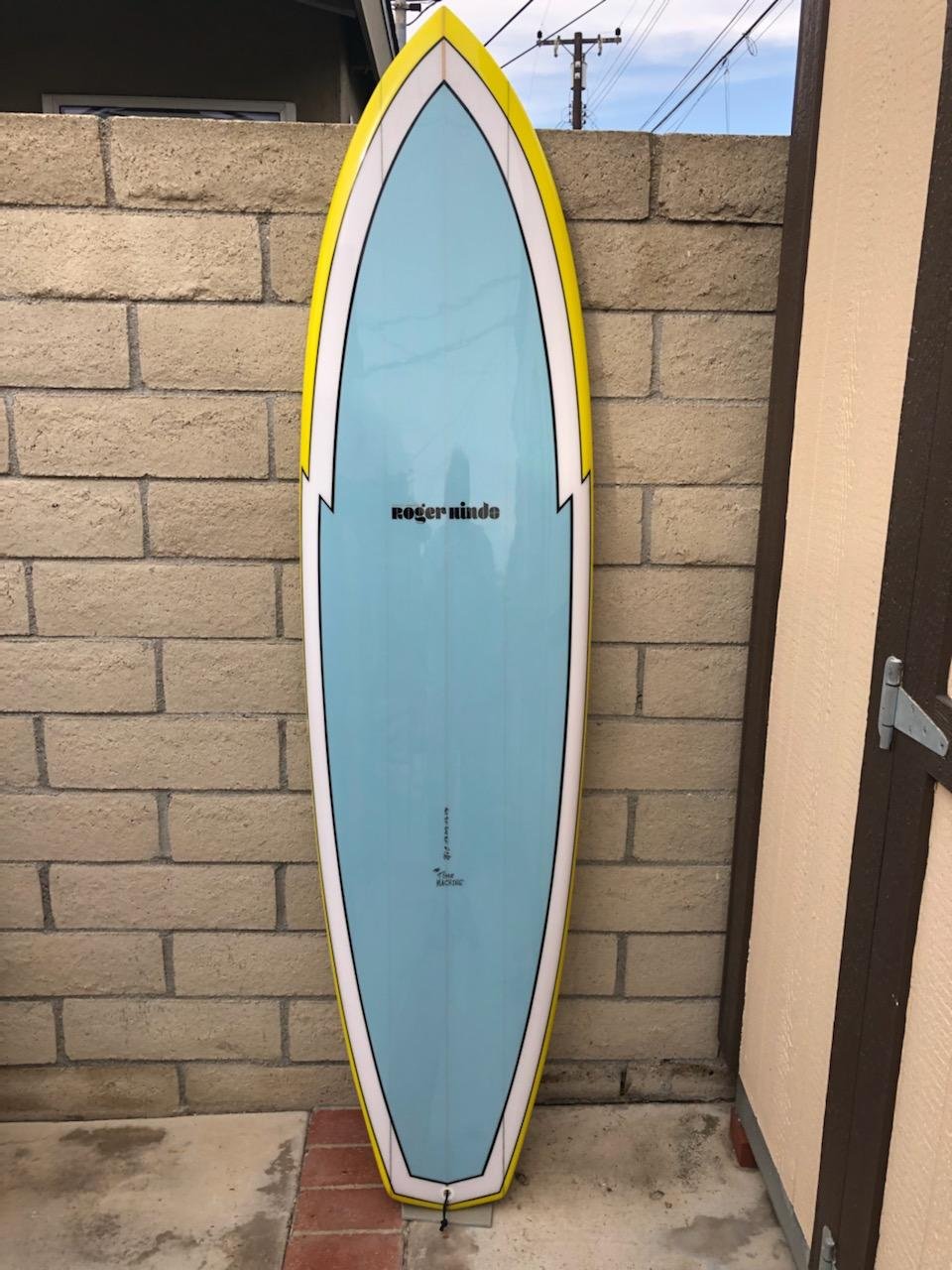
What I love about this design is that it promotes style. This board turns effortlessly but the outline and forward volume holds energy in transition. I’ve never been great a surfer but I always cared about style and this design doesn’t allow the surfer to impose bad habits on it. It insists on finding trim.

The design is an amalgam of 50 years of various board designs. The outline is straight out of 1973. Each element harkens a specific era and served a purpose for a different design; from the beaked nose, the modern rails, the edges, the single channel in the Vee panel, the Twin fin placement and cant, even the glass schedule. These are designs that I’ve implemented in a specific era, but they’ve never all overlapped in one board. And that’s why I named this one The Time Machine. It really encapsulated everything I’ve down until now.

That outline is a reference to 1973. Those boards were mainly single fins and we knew nothing about foil and the rails were chunky, but that outline still has a lot of relevance today. Much like the boards of that era, this type of design should be surfed off the back half or third of the board. The relaxed rocker and the bulk of volume up front lets the board run pretty free, but then the edges and the channel (with Vee) allow you to steer from the back.

The wide point is 5” forward of center, so you use that weight and volume in the front to catch waves, for stability when you’re standing, and then to harness speed. The Vee in the tail allows you to leverage from the back and all those edges, on the rails and channel, assist in steering. It’s remarkably responsive, especially for a board with that volume. The upright, large, Twin fins assist in more maneuverability than a traditional single fin, but hold more drive than a three fin set-up.

Weight is an asset for this design, so I use a heavier density foam and a thicker lamination. The weight lends itself to that effortless flow through the water, but will also add to the lifespan of the board. My friend David Scales has been riding his for 2 months and there isn’t as much as a heel dent in the deck.
“I was staying in Torren Martyn’s mom’s guest room in March of 2019. I had asked Torren’s shaper Simon Jones what design would best serve as a one-boardquiver for my trip. He insisted on a 6’10” channel bottom Twin (The Fiji). I surfed it through Australia, Costa Rica, Hawai’i, and in California for the past two years.
What we’ve come up with is slightly lower volume all the way around, fewer channels but more distinct edge along the rail line, and an adjusted rocker profile and bottom. The Time Machine has become my daily rider. It glides and banks through 1’ surf and holds steady in 8’ surf. The low volume and complex tail allows for plenty of maneuverability, and the forward weight keeps the board projecting through transition without any need to pump.”














